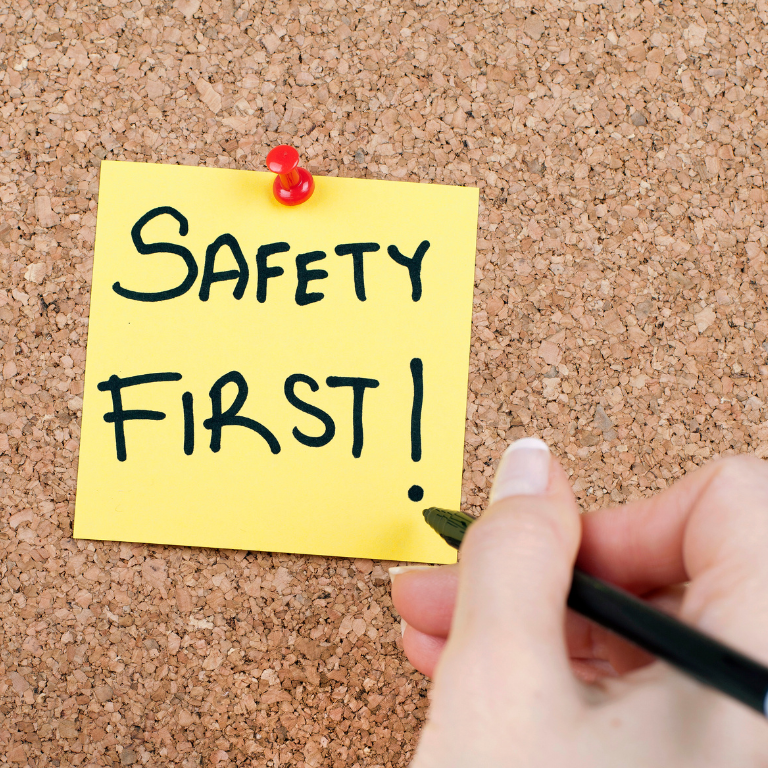Addressing the Top Safety Concerns of Today’s Workforce
Safety is the foundation of a healthy and productive workplace. No matter the industry whether manufacturing, healthcare, construction, or office environments employees face risks that can compromise their health and well-being. While regulations and training programs have improved safety over the years, accidents and injuries still occur with alarming frequency. By examining the leading safety issues workers face, employers can take proactive steps to reduce hazards, protect their workforce, and foster a culture where safety is a shared responsibility.
Slips, Trips, and Falls: Persistent Hazards Across All Work Environments
Slips, trips, and falls remain among the most common workplace accidents. These incidents occur on wet floors, uneven surfaces, cluttered hallways, or poorly maintained stairs. In construction or industrial settings, falls from ladders, scaffolding, or elevated platforms are especially dangerous, often leading to severe injuries or fatalities. Employers must enforce housekeeping standards, provide slip-resistant flooring, install guardrails, and offer fall protection training to minimize risks. Even simple preventive measures, like ensuring proper lighting, can dramatically reduce accidents.
Ergonomic Risks and Musculoskeletal Disorders From Repetitive Tasks
Repetitive motions, awkward postures, and poorly designed workstations contribute to musculoskeletal disorders (MSDs) such as carpal tunnel syndrome, tendonitis, and chronic back pain. These injuries often develop gradually, leading to long-term health problems and lost productivity. In office environments, improperly adjusted chairs and monitors can cause strain, while in warehouses, repetitive lifting and bending create risks. Employers should invest in ergonomic assessments, adjustable equipment, and training on safe body mechanics. Encouraging regular breaks and task rotation further reduces the likelihood of injury.
Exposure to Hazardous Substances and the Importance of Proper PPE
Many industries involve contact with hazardous chemicals, dust, fumes, or biological agents. Without adequate precautions, exposure can result in respiratory illnesses, skin irritation, or more serious long-term health issues. For example, agricultural workers may handle pesticides, while healthcare professionals face exposure to infectious diseases. Employers must comply with standards for chemical labeling, ventilation, and waste disposal while providing personal protective equipment (PPE) such as gloves, masks, and respirators. Equally important is training workers to recognize risks and respond effectively to exposure incidents.
Fire Safety, Explosions, and the Need for Emergency Preparedness
Fires and explosions are high-risk events that threaten both lives and property. Electrical malfunctions, flammable materials, or improper storage of chemicals often serve as ignition sources. Every workplace should have a robust fire safety plan, complete with alarms, extinguishers, sprinklers, and clearly marked exits. Employers must also conduct regular fire drills and provide training on evacuation procedures. A well-prepared workforce can respond quickly in emergencies, reducing injuries and minimizing damage.
Workplace Violence and the Rising Concern for Employee Security
Workplace violence, including verbal abuse, threats, harassment, and physical assaults, has become a significant safety issue. Stress, economic pressures, and unresolved conflicts can all contribute to violent incidents. Employers should establish zero-tolerance policies for violence, provide conflict resolution training, and implement secure access controls. Creating a culture of respect and open communication, where employees feel safe reporting concerning behaviors, is critical to prevention. Addressing workplace violence proactively ensures employees feel secure and valued.
Mental Health, Stress, and Psychological Safety in the Workplace
Beyond physical risks, mental health has emerged as a leading workplace safety concern. Chronic stress, unrealistic workloads, and lack of support contribute to burnout, depression, and anxiety. These conditions not only harm individuals but also increase the likelihood of accidents and mistakes on the job. Employers must recognize psychological safety as part of overall workplace safety by promoting work-life balance, offering mental health resources, and training leaders to identify and address signs of stress. Supporting employee well-being improves morale, engagement, and long-term performance.
Machinery and Equipment Hazards: Ensuring Proper Use and Maintenance
In industrial, construction, and agricultural workplaces, machinery poses constant risks if not properly maintained or used. Accidents can occur from unguarded moving parts, malfunctioning equipment, or failure to follow lockout/tagout procedures. Employers must enforce strict maintenance schedules, provide adequate training, and ensure safety guards are in place. Workers should never be pressured to take shortcuts, as even small oversights can result in catastrophic injuries. Equipment safety is a cornerstone of workplace protection.
Vehicle-Related Risks for Drivers and On-Site Operators
Whether employees operate forklifts in a warehouse or drive company vehicles on the road, transportation-related risks are another leading workplace safety issue. Collisions, rollovers, and pedestrian accidents pose dangers to both employees and the public. Employers should mandate defensive driving training, enforce seat belt use, and maintain clear traffic pathways in facilities. Regular inspections and maintenance of vehicles also reduce the risk of mechanical failures. With proper training and oversight, vehicle-related accidents can be significantly reduced.
Electrical Hazards and the Need for Specialized Safety Training
Electrical hazards are often overlooked but remain a leading cause of serious workplace injuries. Risks include shocks, burns, arc flashes, and fires caused by faulty wiring, overloaded circuits, or improper equipment use. Employers must comply with electrical safety codes, provide specialized training, and ensure only qualified personnel perform electrical work. Clear signage, protective gear, and regular inspections are essential to mitigating risks. By prioritizing electrical safety, employers protect both workers and infrastructure.
Building a Strong Safety Culture as the Best Defense Against Hazards
While addressing specific hazards is important, the most effective solution lies in building a robust safety culture. A strong culture emphasizes shared responsibility, where employees and leaders alike value safety as part of everyday operations. Employers should encourage hazard reporting without fear of retaliation, recognize safe behaviors, and involve workers in safety planning. Embedding safety into decision-making from budgeting to project planning—creates workplaces where safety is not an afterthought but a guiding principle.
Addressing Leading Safety Issues Protects Workers and Strengthens Businesses
The leading safety issues workers face—slips and falls, ergonomic risks, hazardous substances, fire hazards, workplace violence, mental health concerns, machinery, vehicles, and electrical dangers—highlight the complexity of maintaining safe workplaces. Employers must go beyond compliance, investing in training, communication, and culture-building to address these risks. Ultimately, prioritizing workplace safety is both a moral obligation and a business advantage. When employees feel safe and supported, they are more engaged, productive, and committed to organizational success.



